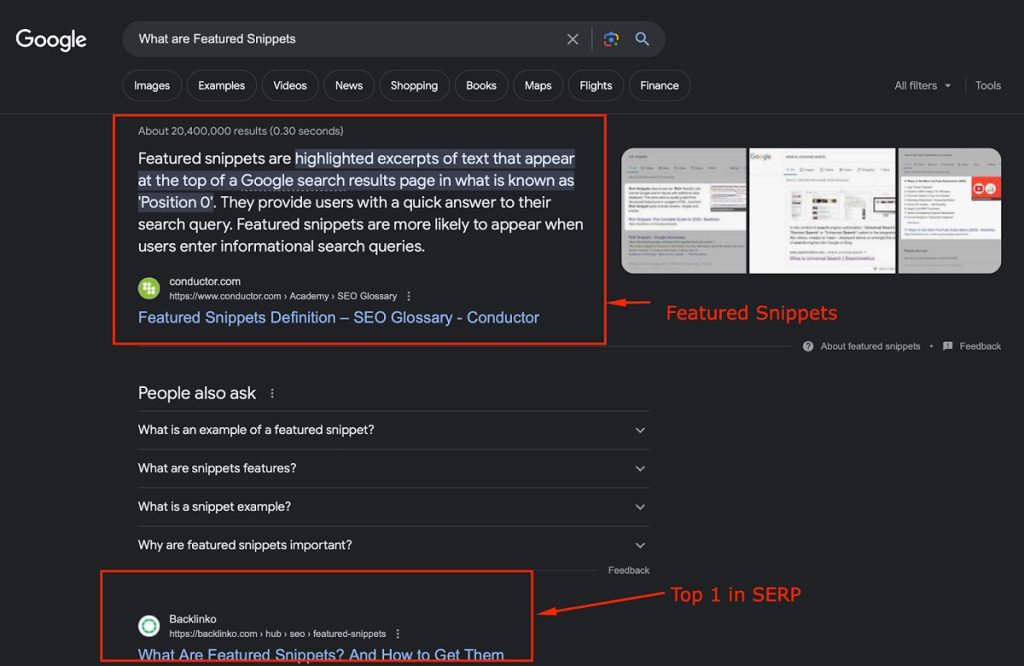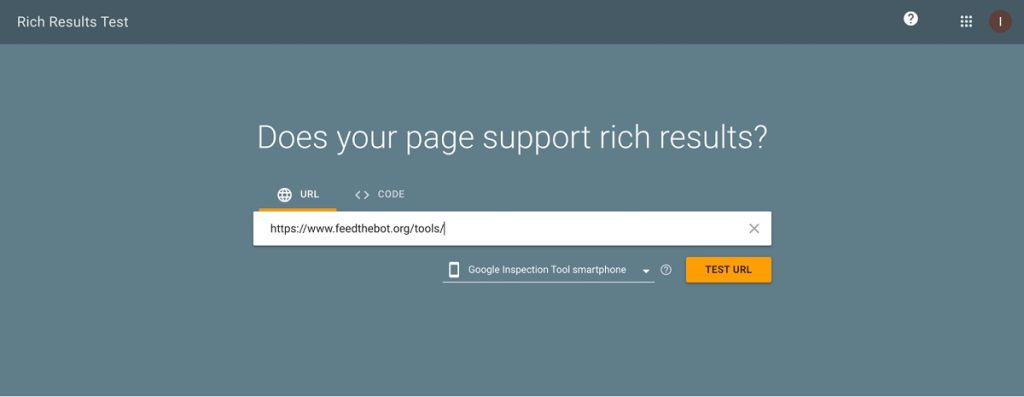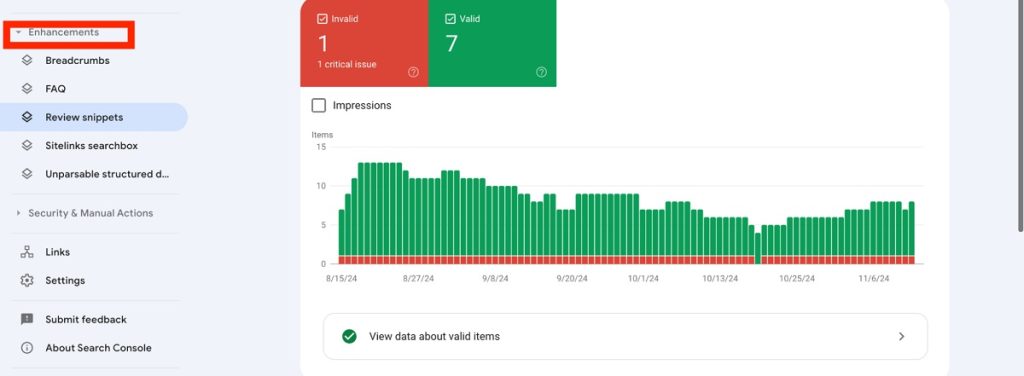Latest update: May 20, 2025
Rich snippets enhance your website’s presence on search engine results pages (SERPs) by making your listings more eye-catching and informative. When implemented properly, they boost visibility and offer valuable information directly in search results. However, misusing them can lead to severe consequences, such as penalties and lower rankings. This guide outlines how to use rich snippets correctly, detailing their advantages and the risks involved with improper application.
What Are Rich Snippets?
Rich snippets are a powerful SEO feature that transforms basic search results into engaging, information-rich listings. They give users a preview of your content directly on the SERP. Unlike standard search results that display only a title and brief description, rich snippets add extra information, making your listings more appealing to potential visitors.

Key Highlights of Rich Snippets for SEO:
- Enhanced Visibility: Rich snippets make your website stand out in search results by presenting extra details like star ratings, author names, and price ranges;
- Improved User Experience: They enhance user experience by offering essential information upfront, enabling searchers to make informed choices before clicking a link;
- Content Types: Rich snippets can apply to various content, including articles, products, recipes, events, and reviews, showcasing relevant information such as cooking times for recipes or event dates;
- Higher Click-Through Rates (CTR): The added details make listings more attractive, potentially increasing your click-through rates;
- Direct Answers: In some cases, rich snippets deliver direct answers or key information within the search results, meeting user needs without requiring a click.
How Have Search Engine Results Pages (SERPs) Evolved?

Search engine results pages (SERPs) have evolved significantly with the addition of rich snippets and interactive elements, giving users more engaging and relevant content. These features, now referred to as rich results by Google, enhance website visibility and make search listings more appealing by incorporating carousels, images, and other visual elements beyond plain text links.
Implementing rich snippets relies heavily on structured data. Using schema markup allows digital marketers to optimize content so it appears as rich results. This markup helps search engines better understand the content, making it easier to display the right information. Adhering to Google’s structured data guidelines is crucial for effective implementation.
To make the most of rich snippets, marketers should customize schema code to highlight specific details like reviews, ratings, recipes, events, or FAQs. Keeping the markup updated is also important to ensure the content remains accurate and relevant.
Looking forward, rich snippets are expected to become more interactive, possibly featuring videos or animations. Additionally, as voice search becomes more popular, optimizing for voice assistants will be important in the future development of SERPs.
Types of Rich Snippets in SEO
Rich snippets enhance search listings in various ways, depending on the type of content they’re applied to. Here are the key types most commonly used and recognized by search engines:
- Product. These rich snippets provide details about products, such as price, availability, and review ratings, directly in the search results. They are invaluable for eCommerce sites looking to attract buyers;
- Review. Review snippets display star ratings, author names, and dates of reviews. They are essential for businesses and products seeking to establish trust and credibility;
- Recipe. Recipe snippets can show important details like ingredients, cooking time, and nutritional information. They cater to users looking for cooking instructions and food-related content;
- Event. Event snippets give users quick access to event details such as dates, locations, and ticket availability, making them perfect for promoting events;
- FAQ. FAQ snippets can directly answer common questions, displaying a list of questions and answers on the search results page. They are useful for informational and support-related content;
- Article. These snippets enhance news, blog, or article listings by showing the headline, author, and publish date, helping to draw in readers interested in news or specific topics;
- Video. Video snippets can show a thumbnail of the video and a brief description, making video content more appealing and likely to be clicked in search results;
- Local Business. Local business snippets provide crucial information like address, phone number, and opening hours, optimizing local search visibility for businesses;
- Breadcrumbs. Breadcrumb snippets offer a navigational aid, showing the page’s position within the site hierarchy. This can help users understand the context of the page within the larger website;
- How-to. These snippets are designed for instructional content, providing step-by-step guides right in search results. They work well for DIY projects, tutorials, and educational resources.
What Is the Difference Between Rich Results and Featured Snippets?
It’s important for webmasters to understand the difference between rich and featured snippets to effectively boost search engine visibility while avoiding misuse.
Markup Rich Results (Rich Snippets)

Rich snippets are improved search results that use structured data markup from a webpage. They display additional details, such as ratings, prices, or author information, directly on search engine results pages (SERPs). To ensure accurate representation and value for users, it’s important to follow guidelines when implementing this markup.
Featured Snippets

Featured snippets, or “position zero,” appear at the top of Google’s search results, offering quick answers by extracting relevant content from a webpage. Unlike rich results, they don’t need structured data markup and are selected by Google’s algorithm based on content clarity and relevance.
Key Differences
- Implementation: Rich snippets require structured data markup, whereas featured snippets are algorithmically chosen based on content quality and relevance;
- Control: Webmasters have more control over rich snippets through accurate markup, while featured snippets depend on Google’s interpretation of content’s usefulness;
- Purpose: Rich snippets enhance search listings with additional details, while featured snippets aim to provide quick answers.
What Are the Common Problems with Rich Snippets in SEO?
Rich snippets can greatly improve a site’s visibility in search results, but several problems can reduce their effectiveness or even lead to penalties.
- Misleading Markup: A major issue occurs when the structured data doesn’t accurately reflect the page’s content, misleading both users and search engines;
- Technical Errors: Errors like incorrect syntax or incomplete data can prevent rich snippets from showing up correctly;
- Over-Optimization: Using irrelevant keywords or marking up content that isn’t actually on the page to manipulate search rankings can result in penalties;
- Monitoring and Updating: Neglecting to regularly update structured data as content changes can result in outdated or inaccurate snippets, which harms user trust and search engine credibility.
Addressing these problems and using tools like ChatGPT for content and markup can help webmasters implement rich snippets effectively, boosting SEO while avoiding misuse.
How Can You Avoid the Abuse of Rich Snippets?

Rich snippets are inherently machine-readable, making misleading data easily detectable by Google. This is why they must accurately represent the content of the page they describe.
Untruthful or misleading markup or content
Posting fake reviews or falsifying info like fake ratings will get you penalized by Google. Using markup like rich snippets with such false information is a quick way to get penalized by Google.
Things Google has explicitly stated are considered abuse
- Marking up content that is in no way visible to users;
- Marking up irrelevant or misleading content, such as fake reviews or content unrelated to the focus of a page.
How to Get Rich Snippets?
Incorporating rich snippets into your website involves implementing structured data correctly and carefully following search engine guidelines. Search engines extract these snippets by analyzing the structured data embedded in your pages. This guide outlines the steps to accurately set up structured data, improving visibility and engagement while avoiding penalties for misuse.
Step 1: Understand Structured Data
Structured data uses standardized labeling to make your website’s information clearer to search engines, aiding in content display. It helps search engines understand and present your content effectively. Popular formats include JSON-LD, Microdata, and RDFa, with Google favoring JSON-LD.
Step 2: Choose the Right Schema
Visit Schema.org to find the appropriate schema for your content. Schema.org offers a set of shared vocabularies that webmasters can use to mark up their pages so major search engines can understand them. Whether you’re featuring articles, events, products, recipes, or reviews, choosing the correct schema is essential for accurately representing your content.
Step 3: Implement the Markup
After you’ve chosen the right schema, the next step is to add the structured data markup to your website. You can add structured data directly into your web pages’ HTML or use a CMS that supports it. For WordPress users, there are plugins available to simplify and automate this process. Be sure to apply the markup consistently across all relevant pages to increase the chances of generating rich snippets.
Step 4: Test Your Implementation
Once you’ve added the structured data, use Google’s Rich Results Test tool to ensure your markup is readable by Google and qualifies for rich snippets. The tool will point out any errors or offer suggestions for improvement, helping you fine-tune your implementation for the best results.
Step 5: Monitor and Update
Search engine algorithms are always changing. Regularly monitor your pages using Google Search Console to ensure that your structured data stays effective and continues to produce rich snippets. Update your markup as needed to comply with new guidelines or to reflect any content changes.
How to Check Rich Snippets?
Making sure your rich snippets display properly in search results is vital for getting the full advantage of your SEO efforts. This part of the guide will show you how to verify that they are effective and accurate. By doing so, you’ll stay compliant with search engine guidelines and steer clear of potential penalties for incorrect or misleading markup.
Utilize Google’s Rich Results Test

Google’s Rich Results Test tool is an essential resource for webmasters aiming to validate their structured data and its capability to generate rich snippets checker. Here’s how to use it:
- Access the Tool: Go to the Rich Results Test page on Google’s Webmaster Tools site;
- Enter Your URL: Input the URL of the page you want to test. You can also test code snippets directly if the page isn’t live yet;
- Analyze the Results: Submit the page for testing. The tool evaluates your structured data and shows which types of rich results can be created based on your markup.
This tool not only confirms the presence of structured data but also identifies any errors or warnings that might prevent rich snippets from appearing. It’s invaluable for troubleshooting issues and optimizing your markup.
Monitor Performance in Google Search Console

Google Search Console provides another layer of insight into how your rich snippets perform in real-world search results:
- Enhancements Report: Within the Search Console, look for the Enhancements report section. Here, Google provides feedback on structured data it finds on your site, including any issues that need attention;
- Search Appearance Filter: Use the Performance report’s Search Appearance filter to view metrics specifically for your site’s rich results. This includes impressions, clicks, and click-through rates (CTR), offering a clear picture of how rich snippets impact your traffic.
Regular Audits Are Key
Implementing and checking rich snippets is not a one-time task. Regular audits are essential to ensure ongoing compliance and performance:
- Schedule Regular Checks: Search engine algorithms and guidelines evolve. What’s compliant today might not be tomorrow, so schedule regular audits of your rich snippets;
- Update Your Content and Markup: As your site’s content changes, ensure your structured data is updated accordingly. This keeps your rich snippets accurate and effective.
Addressing Errors and Warnings
When you encounter errors or warnings in your rich snippets’ structured data:
- Prioritize Corrections: Errors will likely prevent your rich snippets from appearing, while warnings may limit their effectiveness. Address these issues promptly;
- Follow Best Practices: Refer to Google’s Structured Data Guidelines to get the most current and accurate instructions for fixing any errors or warnings.
When Should You Optimize for Rich Snippets?
Knowing when to optimize your content for rich snippets is essential. Proper timing can greatly boost your content’s visibility and present valuable information to users right in search engine results.
Launching New or Updated Content
Whenever you introduce new content or significantly update existing pages, it’s an ideal time to implement or revise your structured data for rich snippets. This includes:
- New Product Listings: Highlighting features like price, availability, and reviews from the outset can dramatically increase click-through rates;
- Updated Articles or Blogs: Adding author, publication date, and review ratings to refreshed content can reinvigorate its appeal in SERPs.
Targeting High-Conversion Pages
Focus your rich snippets optimization on pages that have a direct impact on your conversion rates. This includes:
- E-commerce Product Pages: Detailed product information, including ratings and price, directly influences purchasing decisions;
- Service Offerings: For service-based businesses, showcasing ratings, pricing, and service descriptions can significantly enhance booking rates.
Reflecting Significant Business Changes
Whenever your business goes through major changes that impact your online content, it’s a good idea to review your rich snippets:
- New Locations or Services: Make sure your structured data includes any new locations or services your business offers;
- Changes in Availability or Pricing: Update your snippets with the latest details to keep your listings accurate and maintain trust with users.
Implementing a Comprehensive SEO Strategy
Rich snippets should not be an afterthought but a key element of your overarching SEO strategy:
- During SEO Audits: Incorporate structured data checks to ensure your content remains optimized for rich snippets;
- Following Algorithm Updates: Search engine algorithm changes can impact how rich snippets are displayed, making it crucial to review and adjust your structured data accordingly.
Do Rich Snippets Help SEO?
Incorporating rich snippets into your website strategy can significantly improve online visibility and user interaction. By showing extra, relevant details directly within search engine results pages (SERPs), they enhance the search experience for users and play an important role in boosting your website’s SEO.
Rich snippets make your search listings more eye-catching by including helpful information like ratings, prices, author names, or event dates. This added visibility can lead to higher click-through rates (CTR), as users are more inclined to click on results that offer valuable information at a glance. A higher CTR drives more traffic to your site and signals to search engines that your content is relevant and valuable, potentially boosting your rankings.
How ChatGPT Can Help Create Rich Snippets?

Using AI like ChatGPT can simplify the process of creating and optimizing content for rich snippets, ensuring compliance and effectiveness.
- Content Creation: ChatGPT can assist in generating well-structured, informative content that naturally incorporates targeted keywords and answers user queries, making it more likely to be recognized for rich snippets;
- Structured Data Markup Assistance: It can guide on creating JSON-LD, Microdata, or RDFa markup by generating examples of rich snippets based on the latest SEO guidelines, reducing the risk of errors that could lead to penalties;
- FAQs and How-To Guides: ChatGPT can help draft comprehensive FAQs and step-by-step guides, content types that are often highlighted in rich snippets, enhancing the value provided to users directly in search results.
Conclusion
Rich snippets are a valuable tool that, when used correctly, can enhance your website’s search visibility and user engagement. By following Google’s guidelines and providing accurate, relevant information, you can maximize their benefits. Regularly test your structured data with tools like the Rich Results Test to ensure it effectively contributes to your SEO efforts.


